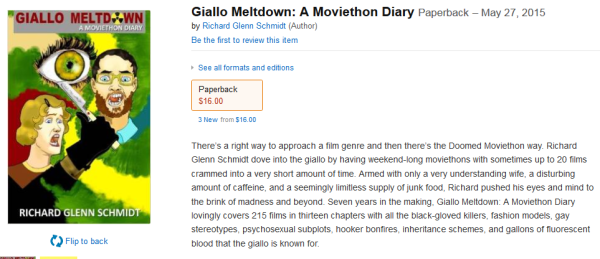https://www.youtube.com/watch?v=C7uidpDAHNE
Posts authored by leems
Before and afters
Hello beautiful people. I remember promising some more before and after pictures from the house, so now I’m going to give them to you. Welcome to my 1949 original pink bathroom. Originally, we wanted to wallpaper the bathrooms; we had some wonderful paper picked out for this one. Then I wallpapered the back-splash of my kitchen and we decided that sometime in the future we are going to hire someone to wallpaper the bathrooms.
I was left with a conundrum: what color to paint. The white was too plain; it emphasized how faded the blue tiles had become (my first impression was that they were grey). I made a mock-up to test colors by splicing some pictures we took around the time we moved. The mock-up also helped us shop for needed accessories, like a cabinet over the toilet.
I’m quite pleased with the final product. The bathroom cabinet is a 1952 cream with gold accents ebay find. And I splurged on a little chalkware cat head and mermaid wall hanging. Unfortunately, 1/2 of the light fixture stopped functioning, but getting it fixed will give us the opportunity to refinish the chrome. There is a crack in the sink from where someone dropped something hard and heavy into the bowl which, thankfully, does not leak. I can live with this, because I can’t stand the thought of replacing such a handsome fixture. The glazing on some of the tiles has been damaged by product bottles over the years and the grout is varying shades of grey, because it’s not really grout, it’s concrete.
After trying different cleaners (some of which the previous owners left behind) and researching house construction methods, I realized that the tile in my pink bathroom was applied by mudding. Mudding is the process of setting tiles into a slurry of cement and it predated wall board (which wasn’t around until 1946). It made sense since every original wall in my house is concrete (yes, all the interiors as well), and is probably the reason why the bathroom held up so well to obvious abuse. I have made peace with the idea that I will not have bright white grout.
Hamlet is way funnier as choose-your-own-adventure game – Boing Boing
The world is making games that I want to play…for the first time since Strawberry Shortcake on Atari! And with seriously awesome artists!
Step into the shoes of Hamlet, Ophelia, or Hamlet Sr. in To Be or Not to Be, a laugh out loud funny interactive tale that you’ll want to play again and again.
Source: Hamlet is way funnier as choose-your-own-adventure game – Boing Boing
Amazing utensil inventions from Australia
I have decided that Australia is the best place on the planet to find inventive utensils. It all began with a Kick Starter campaign for the ButterUp. For those of you who keep actual butter in their fridge and not spreadable margarine, you are familiar with the bread destroying inflexibility of the chilled substance. Many of you may have moved on to French butter keepers. If you are a Floridian, you may have tried French butter keepers and found our humid, fertile environment too mold rich for this method. You face a dilemma.

 After the ButterUp, what flatware collection is complete without a spork? I tend to make a lot of chili and stew in Fall which are both too meaty and chunky for spoons and too liquidy for non spoons. A spork seemed like the best solution, but my initial searching found only camping utensils and collapsible picnic ware. I wanted a table top edition, something that could fit in with the rest of my flatware. I found Splayd Utensils.
After the ButterUp, what flatware collection is complete without a spork? I tend to make a lot of chili and stew in Fall which are both too meaty and chunky for spoons and too liquidy for non spoons. A spork seemed like the best solution, but my initial searching found only camping utensils and collapsible picnic ware. I wanted a table top edition, something that could fit in with the rest of my flatware. I found Splayd Utensils.
Some people say that the spork was invented by General MacArthur while he was in the pacific (“Spork’s Weird History” on Salon), others trace the roots of the spork to icecream forks and runcible spoons. Whatever the true past of the spork, the splayd was invented in 1940 by Bill MacArthur (explanation for the General MacArthur myth?), who apparently wanted to save ladies and their tea dresses from balancing plates, forks, and knives at outdoor barbeques. Splayd Utensils are a beautiful step in the evolution of the spork. The straight edges aid in cutting without being sharp or dangerous when using the utensil like a spoon. The bowl is a little shallow for good liquid retention, but it does the job. I found a used set that, like the picture, has a very angular design. New Splayd Utensils are a bit curvier and can be ordered from Australia.
Last, but not least, and, I suppose, not really a utensil is the Memobottle. This is another Kick Starter that I found answered a very specific question: how to properly organize a bag that carries your files, your laptop, paper, tablet, etc., things that are all flat and rectangular, with a water bottle as well? The answer is to make the bottle flat and rectangular. I know there are many of you who never encounter this problem, who do not attend academic conferences or corporate business retreats. You may not need this, but everyone else, all you paper pushers, should seriously check it out when Memobottle is finally made available for purchase online.
Levi Levi is at a conference, he’ll return your messages when he gets back
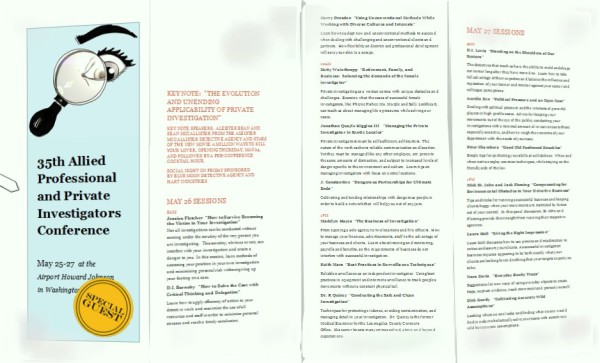
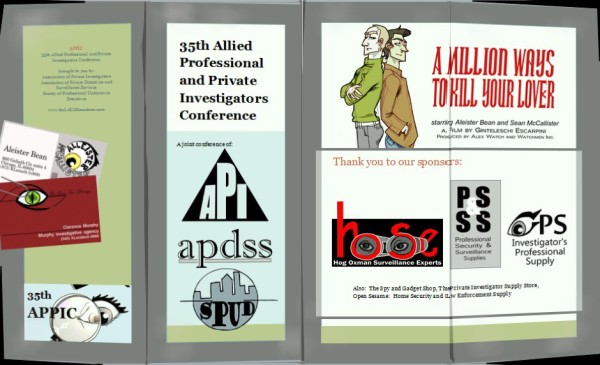
And lest you think all those conference sessions were just ‘Lorem ipsum dolor sit amet,’ and ‘because detective-story-nerds:’
Continue reading Levi Levi is at a conference, he’ll return your messages when he gets back
Roses


um, teddies in the air
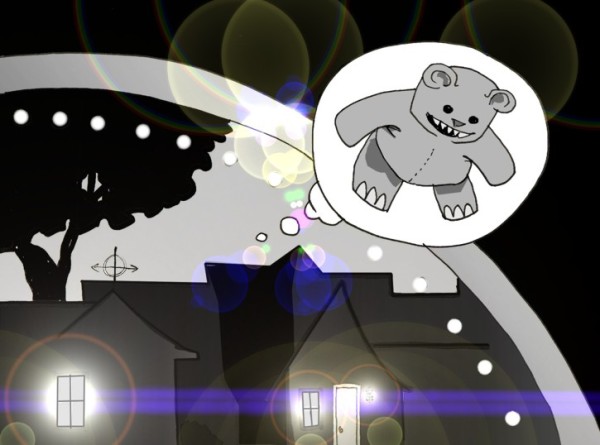
Beautiful used goods
Giallo Meltdown
Richard and I are racing. His book: Giallo Meltdown: A Moviethon Diary is now available for sale on Amazon. I drew that cover ya’ll!
If you haven’t wandered over to DoomedMoviethon.com and tasted his literary stylings then, do! do! Richard’s writing is engaging and witty. It will pull you in, make you giggle, and embarrass you at the bus stop where people will gawk at you both for reading (who does that anymore) and for openly enjoying yourself in public. I say this because it’s true, not because I’m biased in any way.
Baba Yaga and her izbushka
It’s no surprise that I am enamored of the witch. I have drawn her in all her incarnations, back to her most powerful mothers. I have studied her, gorging myself on sociological studies of the ‘child stealers,’ and the female trinity. Yet, I haven’t written much about her, so here is my first look at the witch. As much as the internet is great, it is also not always the best place to get substantive information on ancient things. There are plenty of sites regurgitating the same information and descriptions of Baba Yaga (Wikipedia) with reference to the folktales that originally sketched her visage and character. I needed to be sure; I looked for those folktales, the most famous of which is Russian Fairy Tales from the Pantheon Fairy Tale and Folklore Library, by Aleksandr Afanasev, translated by Norbert Guterman and illustrated b Alexander Alexeieff. It just happened to live on the shelf of my personally library, a relic of my childhood (I spilled milk on it when I was six or so).
Baba Yaga the boney legged, or, in one story, the golden legged, is one of three sisters. She has three daughters, sometimes beautiful and sometimes deformed. She has claws and a nose that hits the ceiling of her ‘little hut’ where she often lies stretched from corner to corner. She is sometimes helpful to youth on a quest, mostly devious towards young women, and often devising ways to eat her visitors. She sharpens or ‘whets’ her teeth for these chow downs and can gnaw through whole forests. Her ambiguous intentions to people make her stand out in folklore where characters are usually only evil or only good (Johns, 1998).
Baba Yaga has servants; sometimes these are youth who take on temporary servitude in order to get something from her, and sometimes these are maids who have been given to her for some other favor. She commands oxen, eagles, and magical mares. And her primary, if not only, mode of transportation is folded up in a mortar which she goads along though the sky with a pestle and sweeps her tracks away with a broom. I have not yet figured out how she could fly in such a thing and still need to sweep her tracks away, though these tools also allude to other, older, things like the potions ancient wise women mixed up, winter winds, and a the sweeping of the oven after eating (Cooper, 1997). Like many evil spirits, Baba Yaga is driven to count things and cannot cross a river or other running water.
Merman
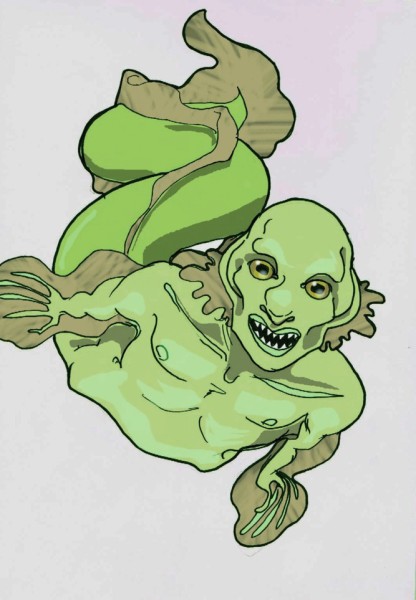
Professional Publication
Are you hankering for a good read on the resource sharing trends in Latin American libraries? Well, look no further; I just got one such article published and I’m giving you (at least the first 50 of you) a free copy:
Penelope Sea in print
Two format options of Penelope Sea and Ocean End available on Amazon. Buy the print and get the Kindle edition free!
▶ The Andrews Sisters – Rancho Pillow (1941) – YouTube
Penelope Sea and Ocean End
It’s all true. Penelope Sea and Ocean End will be sold through Amazon, published by me. The Kindle edition is out now! A print edition is on its way. Once it is out, if you buy the print edition you can get the Kindle edition for free. You have so many options!

 The selfsearching song from The Inspector General with Danny Kay – YouTube
The selfsearching song from The Inspector General with Danny Kay – YouTube





